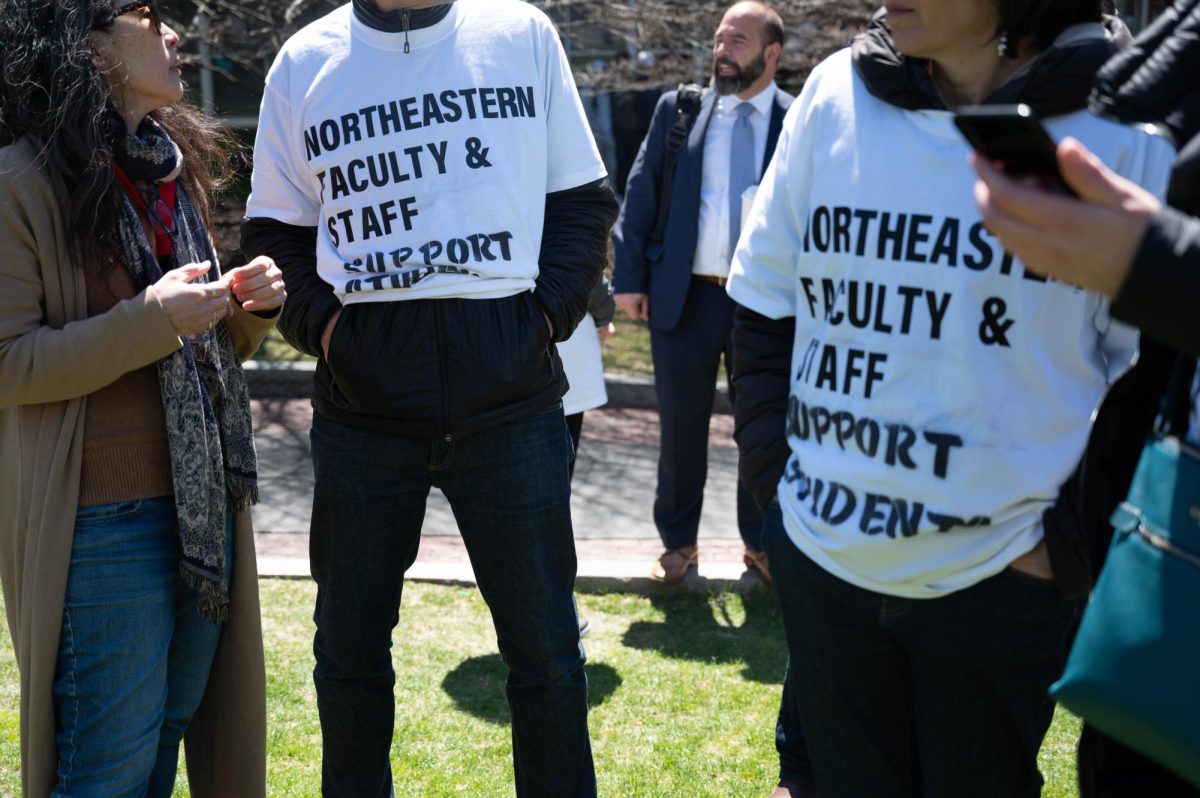Across the nation at this time of year, high school seniors are filling out financial aid packets and forms, attempting to cushion the blow tuition deals to many working parents.
As the cost of attending college soars, however, upperclassmen may worry that increased financial aid money to counteract skyrocketing tuition bills will go to incoming freshmen — leaving them to face higher tuition with insufficient financial assistance.
While the amount of money allotted to student aid increases along with tuition, the system does not exclusively benefit incoming freshmen, said Seamus Harreys, the dean of financial aid at Northeastern.
“For need-based aid, the amount is based on a student applying each year, and merit aid is based on a student continuing to meet certain requirements,” he said, explaining that there is no advantage given to incoming freshmen, as Northeastern’s first priority is providing financial assistance to students with the greatest need.
As with any school in any state, there is only so much money available to help students — though Northeastern boasts many financial promises which are uncommon at other schools.
“Northeastern guarantees a per-semester amount per student throughout their undergraduate career, which is fairly unique,” Harreys said. “On top of that there may be additional funds depending on need, but there is always that [guaranteed] amount.”
Despite the university’s attempt to provide for students with extreme need, the task of financing an education is still a daunting one for many families.
According to College Board’s annual report on college pricing and financing, students at private universities like Northeastern will pay an average of $1,132 more next year — a significant increase for students already struggling.
“Because of caps on financial aid, this year the amount of aid I got didn’t come close to covering my tuition,” said Sharon Moskowitz, a sophomore communications major. “I had no choice but to take out huge loans or somehow pay out of my pocket.”
While some students said the aid they’ve been offered is insufficient, the Office of Financial Aid assures students in the most financial trouble that the system is designed in their favor.
“Over the last five years, the economic situation has improved for many families — parental circumstances like income and asset value has increased,” Harreys said. “What we are trying to do is address students for which that is not true.”
He added that 20 to 25 percent of Northeastern’s undergraduate population qualifies as having extreme need, and they are the main priority.
With changes to the financial aid budget looming at the federal level and cuts in state aid programs, schools often have a hard time bridging the gap between what a family can afford and what college actually costs.
“We spend every dollar the institution, the state government and the federal government allow,” Harreys said.
He pointed to recent improvements to the work-study system as an example of Northeastern’s push for more students to take advantage of available aid.
Despite a completely modernized, newly computer-based work study system, many students find fault.
“I have work-study available to me, but it doesn’t necessarily make sense for me to waste hours in a work-study position when I could be making five times the money at my other job,” Moskowitz said.
Harreys said that the roughly $5 million allotted to the work-study program annually goes to students of low to moderate income. While there is always a waiting list for the program, preference is often given to those students who have taken advantage of the positions the previous year.
While it is impossible to financially appease all students attending the university on limited funds, more are frustrated by the system itself. Stephanie Lafferty, a senior international business major, said she had classes blocked this semester after aid money was allocated incorrectly.
“The money was there, it had just been put toward a different semester and I couldn’t get anything done,” she said.
Lukas points out that despite flaws, Northeastern’s financial aid office has its strengths. “As far as [offering] scholarships, Northeastern was the best of the schools I applied to,” she said, adding that merit-based aid from this school made up for more need-based money than she could have gotten from others.
The financial headaches and woes, however, are worth it for some, who would rather reach into their pockets to attend Northeastern than go for free somewhere else.
“I could have gotten a free ride somewhere else and not have dealt with this,” Moskowitz said. “But I’m happy with the school, I’m happy with the city and my classes. I’m not happy about the amount of loans I’ll eventually be paying off, but that’s not for a couple of years — it’s worth it.”








